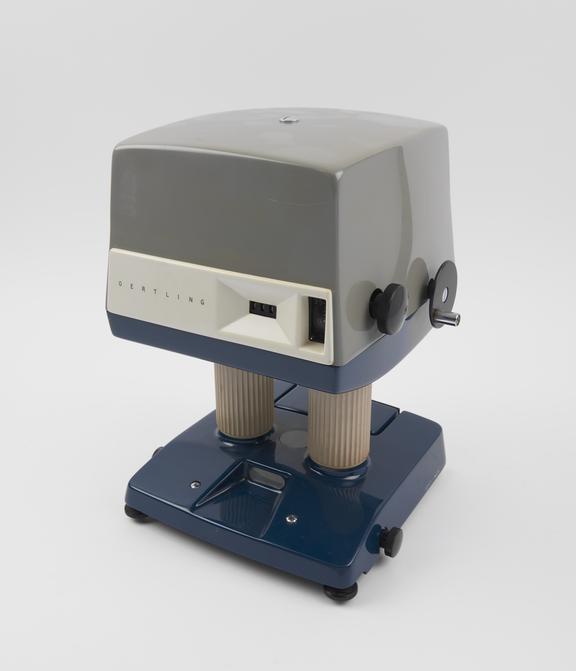


Quartz fibre ultra-micro balance, Oertling model QO1, serial no. 13719, made 1964, capacity 250mgm. Grey and black metal and plastic case.
The quartz-fibre balance is a microbalance on new principles which were developed in the early years of the 20th century. The restoring force is torsional (the twisting tendency of the fibre) rather than gravitational as in conventional balances. R Whytlaw Gray and William Ramsay used such a balance in 1910 to measure the density of radon. Only a bubble of the gas was available, but the balance was sensitive enough to detect 0.00001 milligram.
This balance was constructed in 1963 by the firm of L Oertling Ltd. Its massive appearance compared with early forms is mainly due to the metal casing needed to ensure uniformity of temperature of the beam and torsion elements. Although the capacity is only 250 milligrams in each pan, a reading to the nearest 0.1 microgram can be achieved.
The beam is made of thin quartz rods; it weighs about 50 milligrams and is about four inches long. In weighing the object is counterpoised to within one milligram. The fibre is then twisted back to its original position by the knob on the right and the weight is given on the readout dial.
Details
- Category:
- Experimental Chemistry
- Object Number:
- 1964-454
- type:
- balance
- credit:
- L Oertling Limited




